People
Artist, Patron, Author: Maryam Eisler on the Soft Power of Global Art
The multifaceted Eisler on her own work and support for Middle Eastern art.
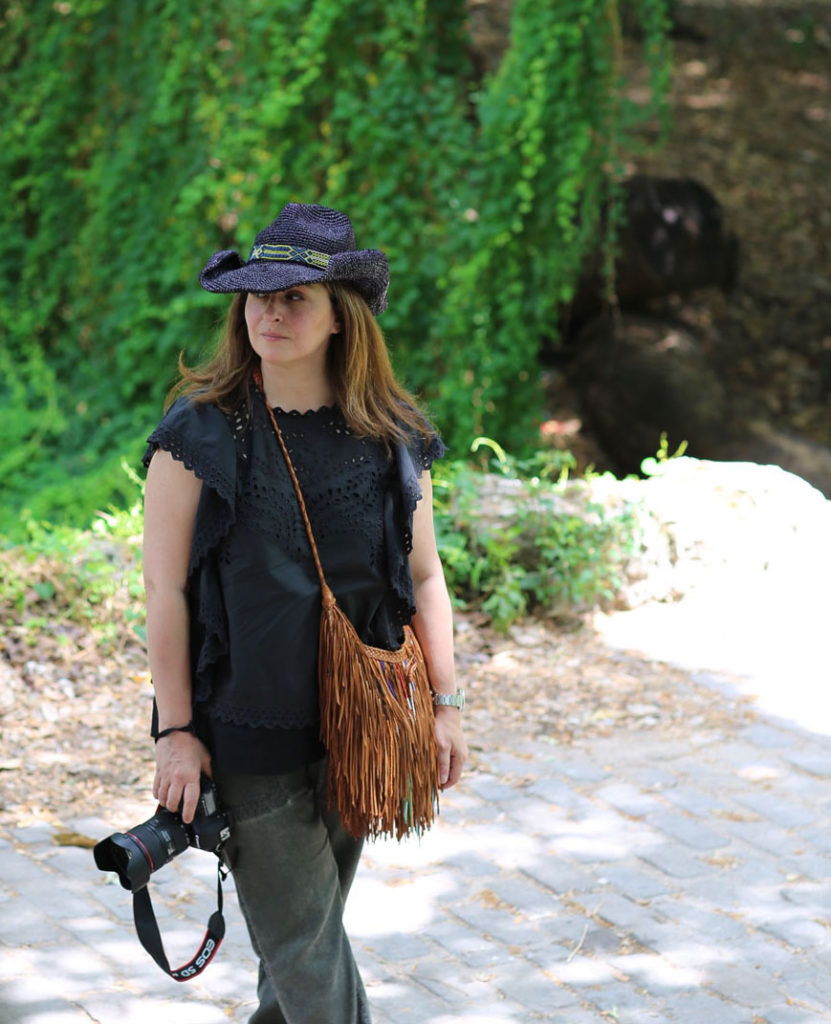
The multifaceted Eisler on her own work and support for Middle Eastern art.

Maryam Eisler’s journey as an artist, a patron, and an author has inspired many over the years. So, too, has her commitment to supporting and platforming art from the Middle East, work which has led to her role as co-chair of Tate’s MENAAC (Middle East North Africa Acquisitions Committee) as well as her extended work with Wellesley College’s Davis Museum (her Alma Mater, and where she served as a member of the board for several years). Eisler also happens to hold a number of additional advisory roles, such as her position as trustee of the Whitechapel Gallery.
It was specifically this multifaceted approach to artistic exploration—whether it be her work with art institutions in London; her editorial contributions, which take the form of books focused on creativity and artist studios; or her own photographic work—that seemed to inform Eisler’s responses in the interview below, conducted just ahead of artnet Auctions’ Contemporary Middle Eastern art sale, now ongoing, which features emerging and established artists from countries including Iran, Iraq, Saudi Arabia and Turkey.
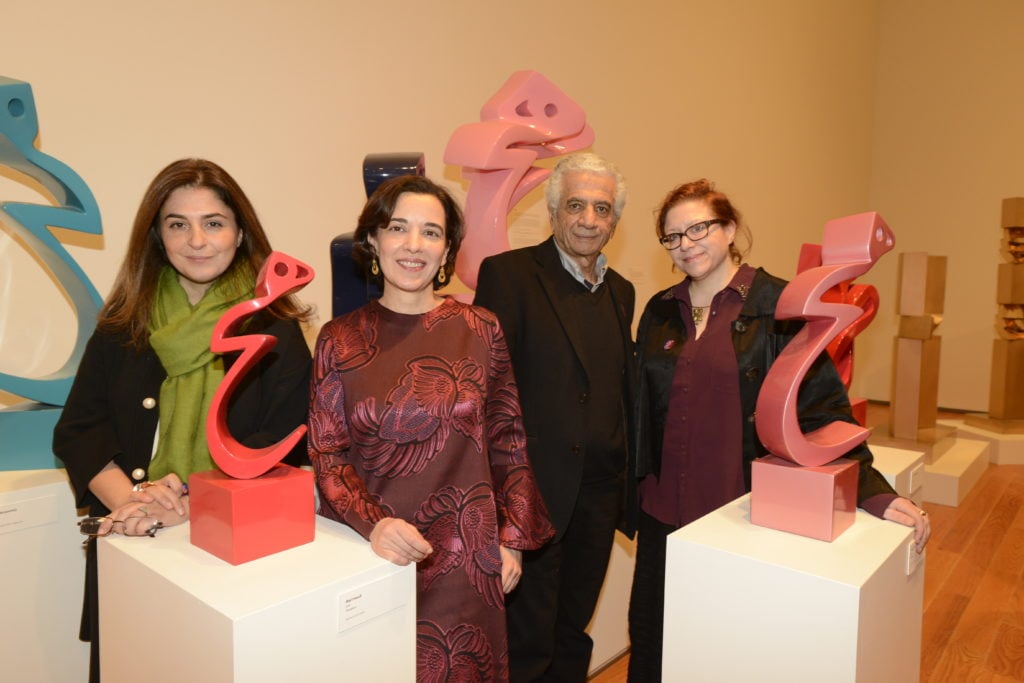
From left to right: Maryam Eisler; Professor Shiva Balaghi, co- curator; Parviz Tanavoli; Lisa Fischman, Director of the Davis Museum and co-curator of the Tanavoli retrospective. Shot in the Davis Museum, Wellesley College, in the “Heech Garden” at the Tanavoli retrospective. Courtesy of the Davis Museum.
You said that your passion for art began as a child, whilst growing up in Paris. I would be interested to know how your life journey in general has contributed to the growth of this particular interest.
Art has been a constant companion since my youth. I grew up in Paris since the age of ten, after having left Iran due to the Revolution, and my weekend activities mostly consisted of regular visits to galleries and museums with my mother.
A couple of exhibitions I visited as a young teenager are actually etched in my memory: a beautiful Modigliani retrospective at the Musee d’Art Moderne and a Man Ray exhibition at the Centre Pompidou—every detail of which I recall so very clearly. In fact I would argue that the latter marks my first passionate encounter with photography. Man Ray’s technique and compositions have continued to intrigue me to no end.
Later on, when studying for my BA at Wellesley College in Massachusetts (mid to end of 80s), I spent a great deal of time attending Boston Museums (with my particular penchant for the Isabella Stewart Gardner Museum and its incredibly rich permanent collection to include certain favorites by Sargent in particular).
On weekends, however, my friends and I often drove down to NYC, enjoying the city’s iconic 80s club scene, closely linked to the artistic movements of the time: Nell’s, Palladium, MKs, Delia’s, The Milk Bar, Copacabana, Danceteria and of course the one and only Area. The latter in particular was known for its 6-weekly elaborately themed window displays created by known artists and set designers of the time, it was there that one often encountered the likes of Warhol, Basquiat and Keith Haring amidst boisterous crowds. That’s when I understood the power of creativity on mass psychology but also how strongly intertwined the music, fashion, and art scenes were at the time and how much they each influenced one another. This effervescent club scene, of course, came to an abrupt end at the end of the 80s, with the stock market crash, a fast approaching recession, and the rise in AIDS. I eventually moved from Boston to New York after graduation in 1989, and it was then that I basked myself in the city’s magnificent institutional artistic treasure troves. My absolute favorite haunt by far was the Frick Collection, and I spent many hours reading and reflecting in its beautiful Garden Court.
But at Wellesley you were not studying art…
That is indeed one of my greatest regrets. The college has one of the strongest art history programs in America, and I am told that it graduates the highest number of curators, more than any other American undergraduate institution. The 80s were a competitive time and students who were regarded as “academic” were somewhat expected and pushed to taking up “serious” jobs on Wall Street or in management consulting. I opted for banking, and it really wasn’t my thing in retrospect. I should have clearly chosen a path that would have served my passion for the arts, but then again you live and you learn. That’s what the journey of life is all about, experimenting and discovering!
After my MBA at Columbia University in the early 90s, I went into cosmetics marketing with L’Oreal and eventually Estee Lauder. It didn’t take long for me to realize that my energy and creative enthusiasm were always better spent in visual marketing (to include advertising campaigns), new product development and packaging design, rather than stock or profit and loss analysis! It is also fair to say that I enjoyed traveling with the company, especially to China in the mid 90s, a very different country and retail environment from the China of today! The experience enabled me to better understand cultural nuances.
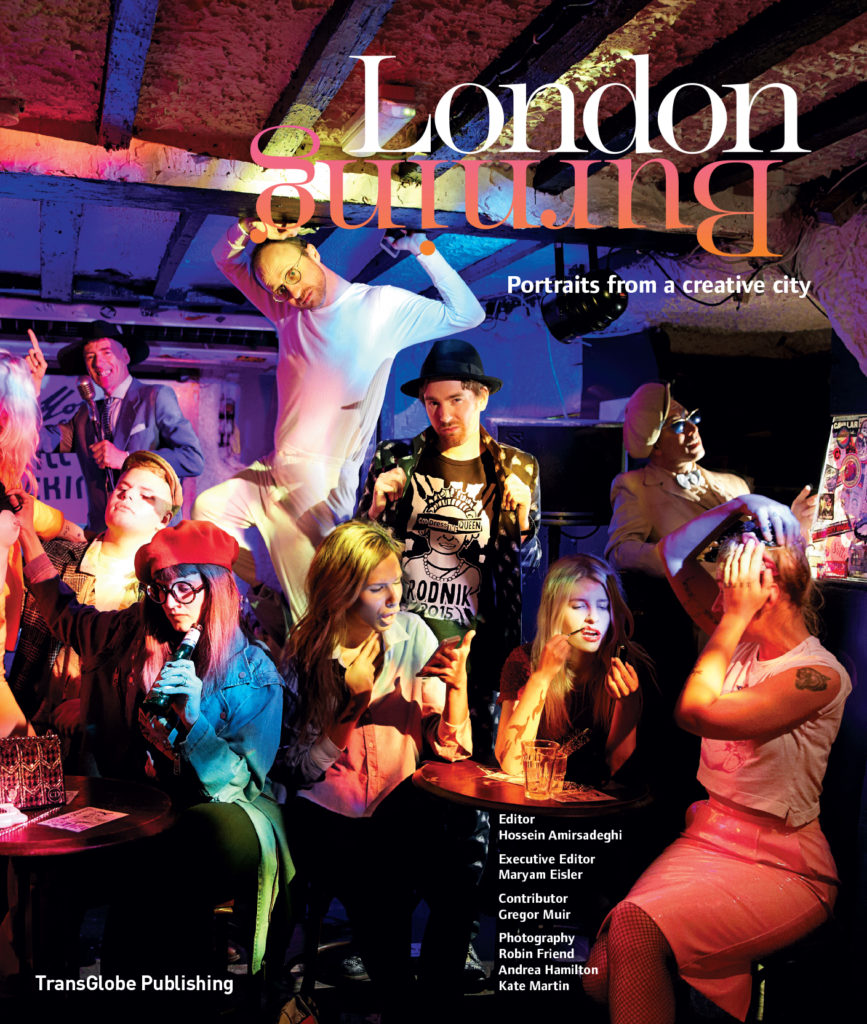
Cover of London Burning: Portraits from a Creative City. Co-published by TransGlobe Publishing and Thames and Hudson. Courtesy of TransGlobe Publishing.
The fact that you have travelled so often has probably offered you the best education, especially in the arts. Seeing is one thing, theory is another.
There’s nothing like an “on the job” education, where you physically see, feel, and get touched emotionally by an artwork. And of course there’s the context in which the work has been created and the platform where it is shown. And most of all the artist’s mind; that’s the part that has always interested me the most: meeting the artist, exploring his or her mind, digging deep into the creative psyche.
You know, in my case, the best education has probably stemmed from my involvement, from an editorial perspective, in the last seven years or so with art and creativity—focused publications. This activity has also enabled me to travel across the globe, and I have probably visited over 400 artist studios as a result. That’s a lot of information intake, which is bound to permeate one’s brain, whether consciously or subconsciously.
And I would probably attribute this real life, in-the-field approach to artistic education, as a main feeder and inspiration to my own artistic practice, resulting in a first photography exhibition at the Tristan Hoare Gallery this past November in London with a series entitled “Searching for Eve in the American West.” As an example, the roots of this particular exhibition were deeply ingrained in a trip I took to Georgia O’ Keeffe’s home and studio, Ghost Ranch, in Abiquiu, New Mexico, five years ago during the making of a book which I contributed to, Art Studio America: Contemporary Artist Spaces, co-published by TransGlobe Publishing and Thames and Hudson, a case example of how things in life come full circle! I was completely taken by the strength of the artist, her spirit, and the grandness of her land, and I promised myself to go back and spend time there, which I did four years after my first visit.
I guess the exhibition marked a moment in my life when I dared to step on the other side of the equation, from supporting the arts to practicing art. A move which may have surprised some and was seen as bold. But life, to me, is all about taking a dare and embracing change, it’s about opening new doors and experiencing new possibilities whilst broadening one’s horizons in the process, and of course the willingness to accept the criticism that goes hand in hand with such ventures, good or bad.
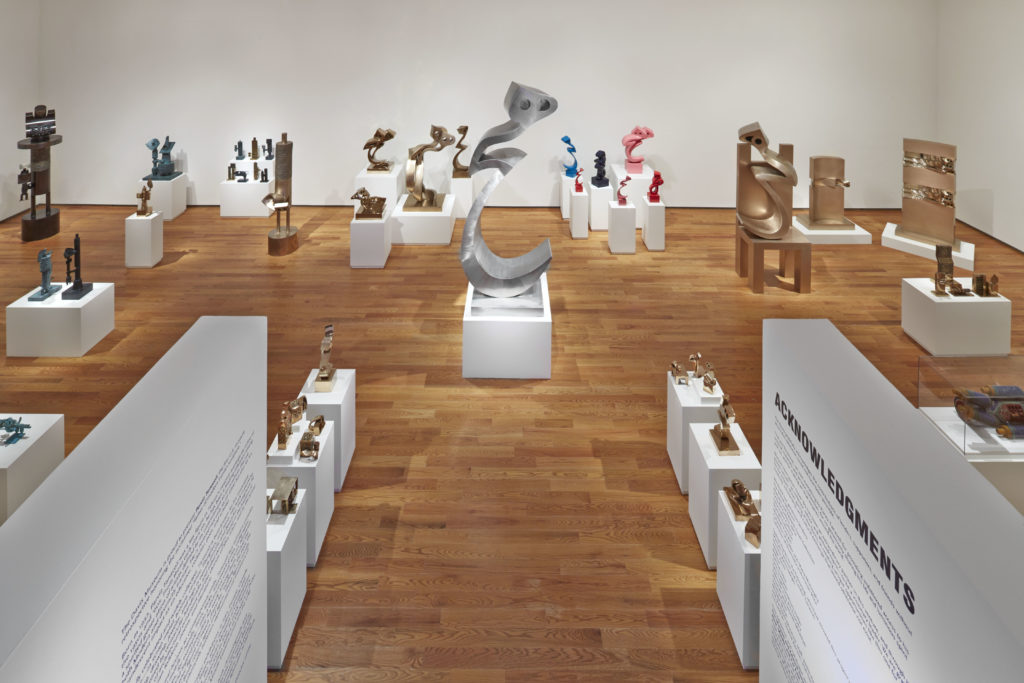
View from above of a section of the Tanavoli retrospective at the Davis Museum, Wellesley College. Courtesy of the Davis Museum.
Just going back to your alma mater, Wellesley, and the Davis Museum. Can you tell me more about the platform you set up for the exposure of the arts and culture from the Near, Middle and Far East?
Yes, in association with the Davis Museum, I established in 2014 a platform to further interdisciplinary research and exposure of the arts and culture from the Near, Middle, and Far East.
The initiative began with a Parviz Tanavoli retrospective—the first of its kind in forty years in the US—co-curated by the Davis Museum Director, Lisa Fischman and independent curator Shiva Balaghi, then a professor of visual arts and culture at Brown University.
Our objective was to show the works of Tanavoli, also known as the father of Iranian sculpture, spanning 50 years of his career whilst demonstrating his powerful ideas, all of which encompass non-political and non-religious universal philosophies deeply rooted in the richness of Persian culture and tradition.
I very much hope that with this exhibition and its associated symbolism, its beauty and its poetry, we managed to create a platform for open dialogue and critical thinking, helping in small ways towards a potential change in negative mediatic perceptions towards the country and its 3,000 year old cultural tradition. Let us not forget that it is this very culture, which has contributed on so many levels to the advancement and proliferation of world culture, be it poetry, mathematics, architecture, garden design, or the visual arts.
Art, in my opinion, offers the best form of soft power, and where politics often fails, art has the ability to win, through open dialogue and broadening of minds, leading to tolerance and acceptance.
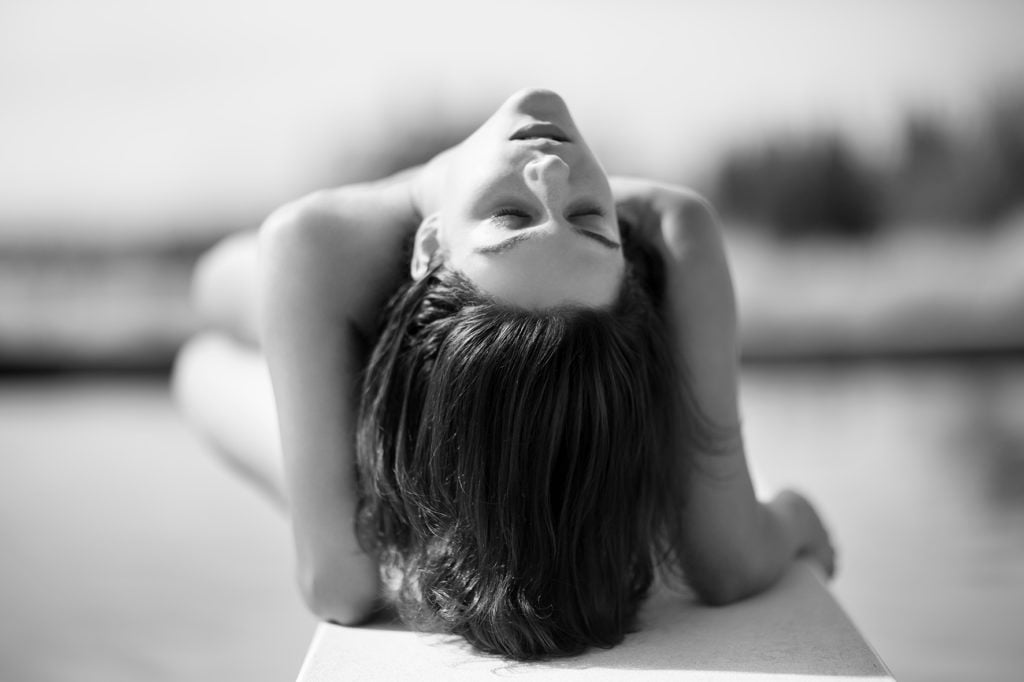
Mahal (Woman), from “Searching for Eve in the American West” by Maryam Eisler. Photo courtesy of Maryam Eisler.
You also have an upcoming exhibition. Can you tell us about it?
Following my first official exhibition of photographs at the Tristan Hoare Gallery in London this last November, I am looking forward to the opening of the same series of photographs, “Searching for Eve in the American West,” at Space SBH in St Barth’s at the end of February. Tristan will also show photographs from my new series, “Eurydice in Provence,” inspired by Jean Cocteau’s 1952 film Orpheus at the Dallas Art Fair in early April….all of which I’m really excited about. I shot part of this new series in the same stone quarries of Beaux de Provence, where Cocteau’s film was also shot.
I am also currently working on a book, Voices: East London, due out in November 2017 (co-published by Thames and Hudson and TransGlobe Publishing), for which I am both author and photographer. The book explores the unique creative canvas of the East End of London through the visual portrayal of and interviews with a wide array of personalities across mediums, across gender, and across generations.
What subject matter interests you in your own photographic work?
In my own photographic work I am continuously and mostly interested in the relationship between the figure and the environment in which it is placed, mostly grand natural landscapes, with examples ranging from the Santa Fe high desert and canyons to the salt beds of Camargues, but also specific locations such as Hershey’s derelict factory outside Havana, Cuba.
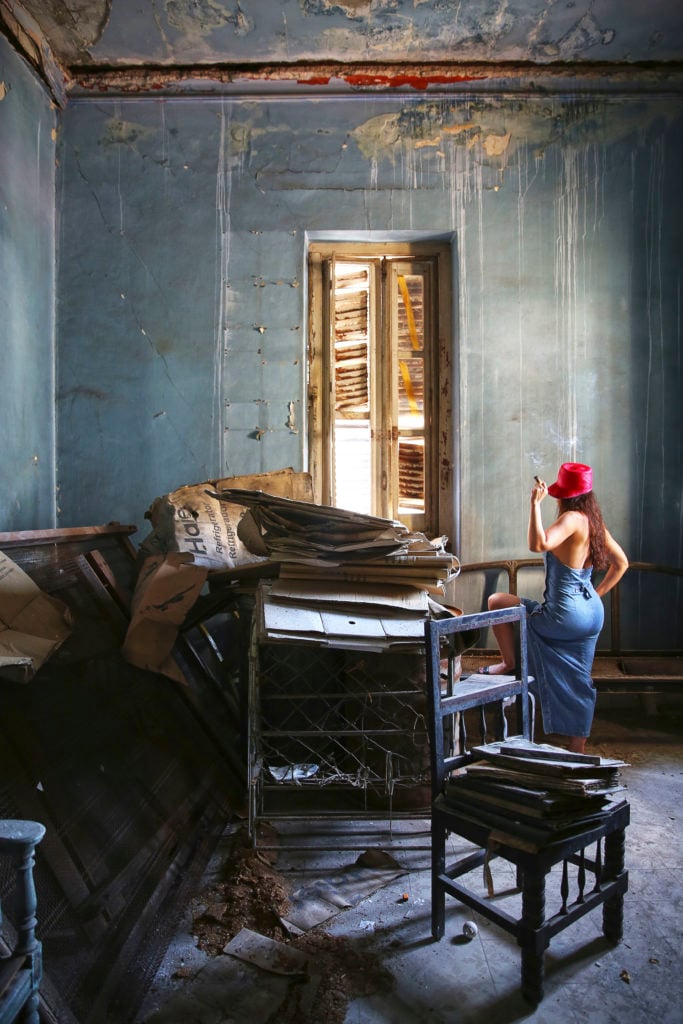
Havana: Beauty and Dereliction by Maryam Eisler. Courtesy of Maryam Eisler.
I am interested in the relationship between body and nature, as well as with the contrast and tensions in form and texture—in stories that herald Woman with a capital W, the “Divine Feminine.” I am equally intrigued by decomposed interior landscapes—both physical and psychological—that tell a story, such as the interiors I shot in Cuba this last May, resulting in a series entitled “Havana: Beauty and Dereliction.” But for me, there always has to be an underlying story laced with palpable tension. The work needs to make the viewer think, experience, imagine, and ultimately buy into the dream. It needs to touch the senses and make the viewer wonder…maybe even offer an ephemeral escape.
Shifting to your work as co-chair of the Tate Middle East Acquisition committee, how do you address the issue of regionalization?
Personally, I don’t believe in regionalization. Regionalization implies borders, both physical and psychological. Art should be a dialogue without boundaries, which is why I very much enjoy my involvement with the Tate, where exhibitions are never regionally focused. Rather, shows are curated around thematic or historic concerns, a much healthier and more intelligent approach, in my opinion, when it comes to conveying ideas and encouraging dialogue.
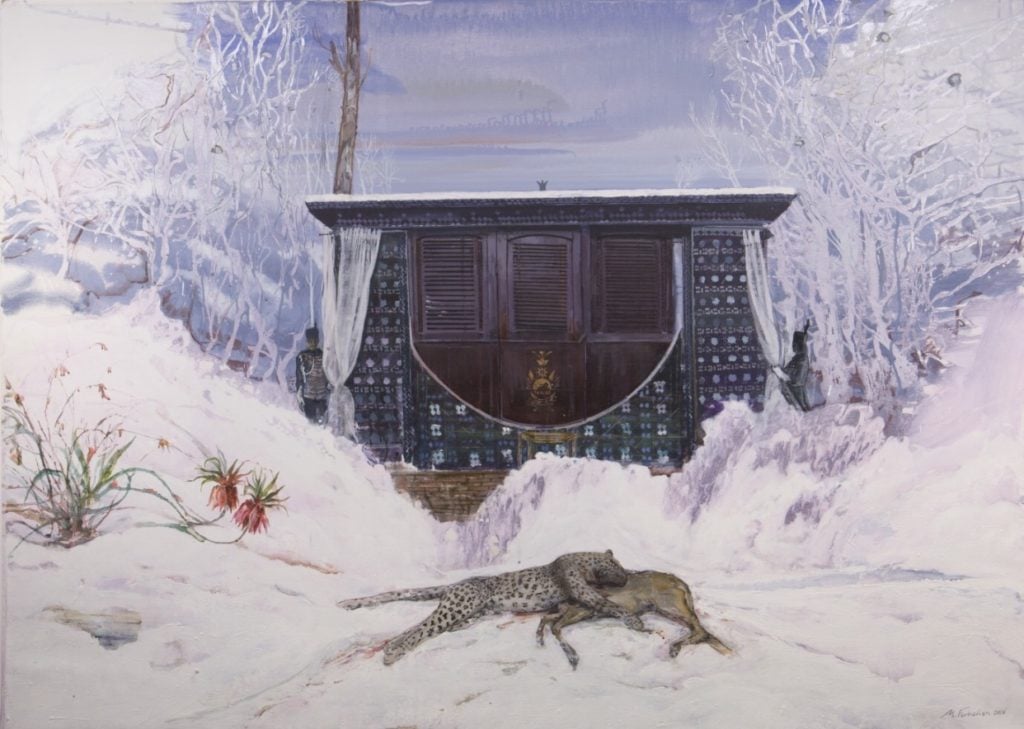
Truce (2016) by Mehdi Farhadian. Acrylic 51×71 in. Courtesy of Mehdi Farhadian and the Richard Taittinger Gallery.
We’ve talked about some great artistic voices from Iran, namely Tanavoli, Neshat, Farmanfarmaian. Are there any lesser known voices whom you are currently fascinated by?
I’m really passionate about three artists of Persian descent at the moment. One is Tehran-based Mehdi Farhadian, who’s painterly style fascinates me, not to mention his phantasmagorical nostalgia of bygone times, a theme close to my own heart. I am glad that he is now able to finally share his talent internationally given his recent representation by NYC-based gallery, Richard Taittinger.
Another talent, is Connecticut-based Jason Noushin, of both Persian and English descent. I am particularly in awe of his female sculptural forms, which are laden with the poetry of Ted Hughes in calligraphic form, a symbolic act of the artist’s own cultural duality.
Finally, Hadi Hazavei, who splits his time between his studio in Tehran and his home in NYC. A true artist’s artist, with proteges including the likes of Kiarostami and Farmanfarmaian, I genuinely believe his time for global recognition has now come. Hadi’s minimalist abstract work is both formal and crude, and it is this dual tension which gives the work confidence and strength. I recently dreamt of a dialogue between Carl Andre and Hadi Hazavei. Call it premonition!